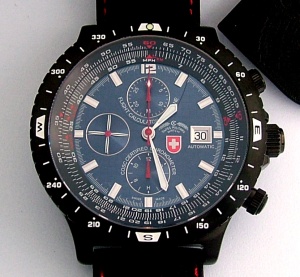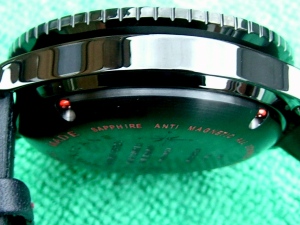The simple answer is that marketing and good cash flow seems to be the key to success for any brand. There are some watch experts that call a 15, 10 or even 5 year old brand, a brand with history. We know far too well that with even a small $40,000 investment, a new brand can be created; five or six models with high quality glossy boxes and some promotional equipment too. I have often mentioned the HTB brand (that would be Harry the Butcher) meaning that often individuals or companies with no experience, thanks to simple production and low cost assembling procedures, can make watches. It is, in fact, no coincidence that many new brands have sprung up, in recent years, just like mushrooms; the ‘clever ones’ have also built a company history.
Somewhat surprising is the so called history of these new, modern brands when we consider that several watch brands have 200 or even 300 years of history. To make matters a bit more confusing it is interesting to see many brands using a simple marketing technique, using the tagline “since x-year”.
Several brands like to show that they truly have a long, well established history and for this reason the since 1853, since 1888, since 1737 is strongly publicised by them. It is interesting to note that almost all of these companies have some history to hide and, in fact, the brand was acquired, it went out of business one or more times or, quite common in recent years, the brand name has been dormant for many years, bought and revived.
In this very big cluster of HTB watch brands we have many entrepreneurs that see an easy opportunity to make (big) money. In fact Harry (being a butcher) knows little about making, marketing and selling watches and also he (not many ‘she’ in this business, actually) has spent his $40,000 in stock with no money and no experience about marketing.
Only a few days ago a new (yet, another) brand has been presented to me. One model was advertised at $800 retail price when, I know for a fact, that it doesn’t cost more than $45 to make. I suppose, think big, is the philosophy of these new comers.
The clever (very questionable) marketing strategy that these companies follow is named distribution. Nothing new for any business to have distributors or agents, but many (almost all) watch manufacturers have coined a new terminology – named “distragent” (distributor/agent).
In fact all of these distragents are nothing but straightforward investors, lead to believe that they are the sole territory distributors (as agents will prove to be too costly to the manufacturers).
I need to point out that, in recent years, a few other industries are following this trend; market globalisation on one side with fewer risks and some greed on the other.
Recently a friend of mine who is a UK distributor for watches and jewellery, was asked to pay over $70,000 to purchase (stock) jewellery to resell to the UK market. Many watch manufacturers (unknown brands) have in place similar procedures; “buy stock at the rate of $20,000 / $35,000 per quarter” and you can become a “distragent”. I remember an American brand asking me, some 6 years ago, to purchase from them at the rate of $35,000 per order without offering any territory exclusivity. To date, they are selling in UK but in very small quantities, while the brand has since been sold to a Swiss company.
While on one side, Harry is now making watches, on the other we have “distragents” that know nothing about the watch industry and, in many cases, know nothing about watches in general. “Distragents” just like to take on the challenge to make big money. Well, yes, it is a bit of a mess with the blind leading the blind.
With no money in the kitty for any adverting and/or marketing (in many cases both words unknown to both parties), what will (and does) often happen is that the brand fails with Harry going back to his butcher shop and the “investor” going back selling, probably, crisps or spare car parts.
A word of advice to the consumer. Thanks to a very clever man (Mr. Hayek – who has recently died) many watches (brands) have become a status of fashion and not precise and engineered timepieces. It is not really worth asking a lot of questions or doing much research when buying any watch below $100, but when a watch starts costing $200/$300 or much more it is really worth checking the true history of the brand, their manufacturing and quality control.




